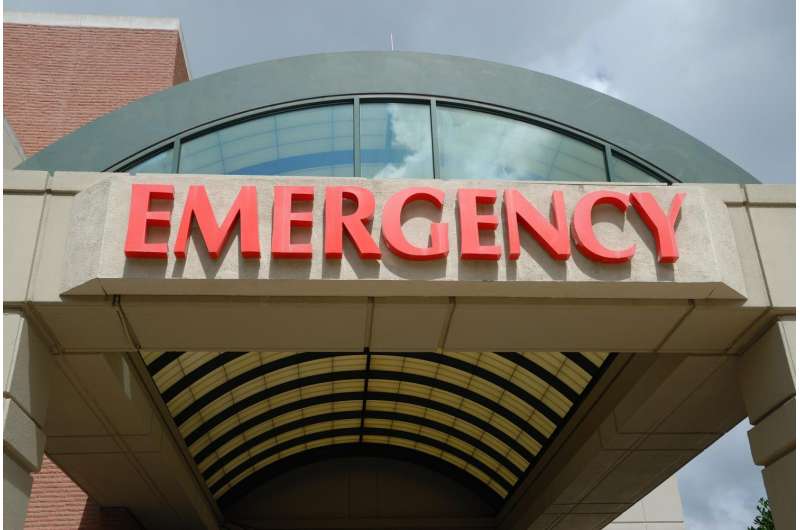Credit: CC0 Public Domain
New research in the February 2023 issue of Journal of the National Comprehensive Cancer Network illustrates how the use of an algorithm to calculate a patient-reported symptom complexity score can help oncologists identify patients who are at increased risk for unplanned visits to the emergency department (ED), creating the potential for additional proactive care, and the reduction of healthcare costs.
The researchers used the Edmonton Symptom Assessment System-Revised (ESASr) as a measurement tool for the most-common symptoms experienced by people with cancer. After classifying each patient's symptom complexity based on the number and severity of symptoms reported, the researchers correlated the symptom complexity with the odds of having an ED visit within a week.
Of 29,164 unique patients with cancer who had completed a PRO questionnaire between October 1, 2019 and April 1, 2020, 738 experienced an ED visit within seven days. The results showed patients with high complexity (i.e. multiple co-occurring severe symptoms) were three times more likely to use the ED than those with low complexity (fewer or less severe symptoms), and over four times more likely to be admitted into the hospital. Patients with moderate symptom complexity also had nearly twice the odds of needing either type of acute, hospital-based unplanned care compared to those with low complexity.
"Using a tool to generate a symptom complexity score—summarizing a large amount of symptom information and condensing it into a quick, easily interpreted alert—allows clinicians to have a real time, comprehensive overview of the symptom severity a patient is experiencing," said lead researcher Linda Watson, RN, Ph.D., Cancer Care Alberta and University of Calgary.
"With this information at their fingertips, clinicians can then proactively offer additional support or symptom management in the lower-cost out-patient care setting and hopefully avoid costly—and potentially distressing—hospital visits. Health care teams have to manage many competing priorities, so finding quick, reliable ways to identify which patients may benefit from targeted symptom management in lower-cost ambulatory care clinics would be helpful."
Several other studies referenced by the authors suggest that up to 1 in 5 ED visits and/or hospital admissions for patients with cancer could potentially be avoided with proactive symptom management in the community. The authors also noted that it is important to recognize that not all ED visits can or should be prevented. Some urgent health problems may necessitate emergency or inpatient care, and some individual patient circumstances may warrant ED use.
"Clinicians who treat patients with cancer are aware that identifying and supporting those who are at the highest risk for ED visits or hospitalizations will lead to better patient outcomes and experiences," commented, Kay Yeung, MD, Ph.D., UC San Diego Health Moores Cancer Center, Member of the NCCN Guidelines Panel for Breast Cancer, who was not involved with this research.
"One of the barriers is how to do a comprehensive assessment effectively in a busy oncology clinic. This retrospective observational cohort study shows that a novel symptom complexity algorithm based on patient reported outcome questionnaires correlates tightly with acute care utilization and may help clinicians proactively identify such patients. It will be important to further investigate how implementing this algorithm prospectively can impact acute care utilization, financial burden, and clinical outcomes."
More information: Linda Watson et al, Patient-Reported Symptom Complexity and Acute Care Utilization Among Patients With Cancer: A Population-Based Study Using a Novel Symptom Complexity Algorithm and Observational Data, Journal of the National Comprehensive Cancer Network (2023). DOI: 10.6004/jnccn.2022.7087
Provided by National Comprehensive Cancer Network
























